A "Quick & Dirty" Guide to
Fossil Shark Teeth
Sandtiger Shark Carcharias spp.
Many 'species' have been named, but the fossil teeth are difficult to distinguish from one another as well as similar genera, such as Odontaspis and Striatolamna. |
Paleocarcharodon orientalis
Considered by some to be the earliest member of the genus Carcharodon, P. orientalis seems to be a short-lived evolutionary dead-end in no direct way related to the modern White Shark. |
Parotodus benedeni
A poorly known species of uncertain affinities; this specimen is from Nova Scotia, Canada |
Otodus obliquus
A direct ancestor of Megalodon (Carcharocles megalodon); most commercially sold specimens come from Morocco |
Carcharocles auriculatus
Resembles a serrated Otodus obliquus and was, until recently, sometimes classified as Otodus subserratus. |
Carcharocles chubutensis
Like other Carcharocles, C. chubutensis is probably best regarded as a chronomorph rather than a biologically discrete species. The numerous subtle variations between C. auriculatus and C. megalodon represent a continuum of evolution within a single world-wide species. |
Carcharocles megalodon
Most commercial specimens come from the Cooper River in North Carolina and are greyish-black (eg: the specimen on the right); large specimens are becoming scarce
|
Cosmopolitodus planus
|
Cosmopolitodus hastalis
A direct ancestor of the modern White Shark (Carcharodon carcharias) |
White Shark Carcharodon carcharias
|
Squalicorax pristodontus
Teeth of this species are functionally similar to those of the Tiger Shark (Galeocerdo cuvier) |
Hemipristis serra
Represented today by the Snaggletooth Shark (Hemipristis elongatus) |
Tiger Sharks Galeocerdo contortus
Closely related to the modern Tiger Shark (Galeocerdo cuvier) |
Tiger Sharks Galeocerdo cuvier
One of the most beautifully-shaped of shark teeth, remarkably similar to those from modern specimens |
Dusky Shark Carcharhinus obscurus
The teeth of various fossil species of whaler (grey) sharks can be very difficult to distinguish; it is probably best to regard all identifications as highly provisional. |
Bull Shark Carcharhinus leucas
The teeth of various fossil species of whaler (grey) sharks can be very difficult to distinguish; it is probably best to regard all identifications as highly provisional. |
Oceanic Whitetip Shark Carcharhinus longimanus
The teeth of various fossil species of whaler (grey) sharks of the genus Carcharhinus can be very difficult to distinguish; it is probably best to regard all identifications as highly provisional. |
Lemon Shark Negaprion brevirostris
Fossil teeth of this species are remarkably similar to the teeth from modern specimens |
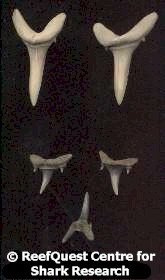 long, slender, smooth-edged blade
long, slender, smooth-edged blade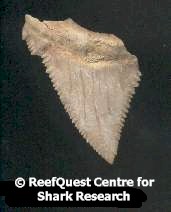 broadly triangular, thin, coarsely serrated blade
broadly triangular, thin, coarsely serrated blade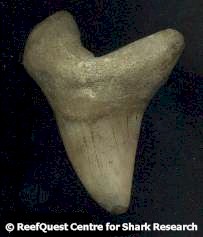 stout, robust, smooth-edged blade
stout, robust, smooth-edged blade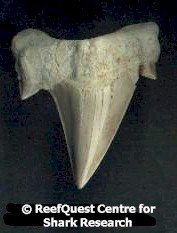 triangular robust, smooth-edged blade
triangular robust, smooth-edged blade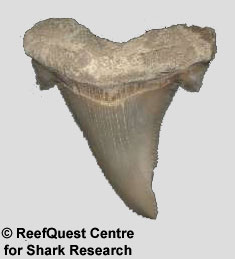 triangular, thick, finely serrated blade
triangular, thick, finely serrated blade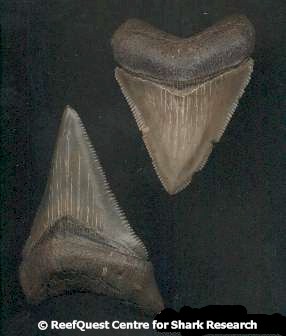 broadly triangular, thick, finely serrated blade
broadly triangular, thick, finely serrated blade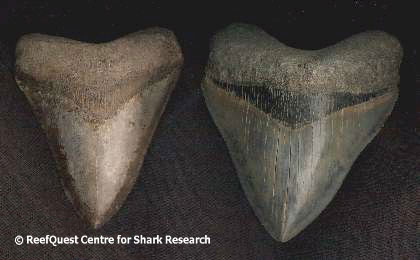
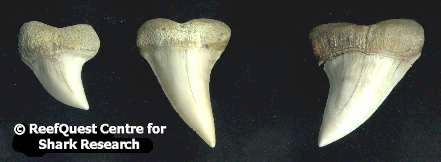
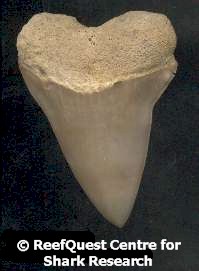 broadly triangular, flattened, unserrated blade
broadly triangular, flattened, unserrated blade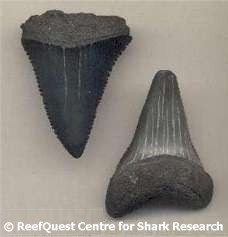 broadly triangular, flattened, coarsely serrated blades
broadly triangular, flattened, coarsely serrated blades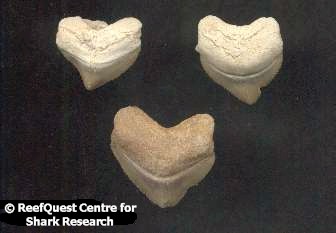 broad, flattened, serrated blade
broad, flattened, serrated blade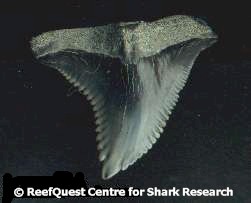 falcate, flattened, strongly serrated blade
falcate, flattened, strongly serrated blade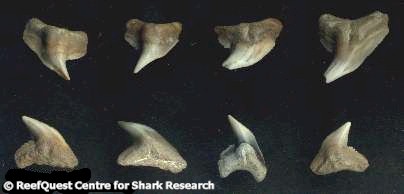

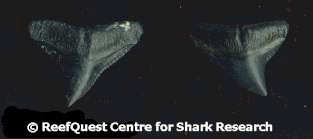 oblique, flattened blade with broad serrated shoulders tapering
to narrow apex
oblique, flattened blade with broad serrated shoulders tapering
to narrow apex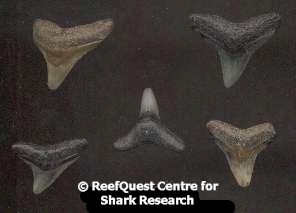 broad, flattened, serrated blade tapering
to narrow apex
broad, flattened, serrated blade tapering
to narrow apex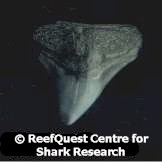 broadly triangular, flattened, serrated blade, superficially
similar to that of a White Shark (Carcharodon carcharias)
broadly triangular, flattened, serrated blade, superficially
similar to that of a White Shark (Carcharodon carcharias)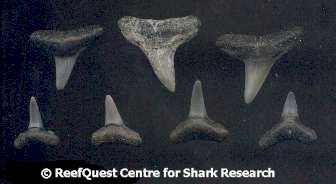 narrow, flattened, unserrated blade
narrow, flattened, unserrated blade